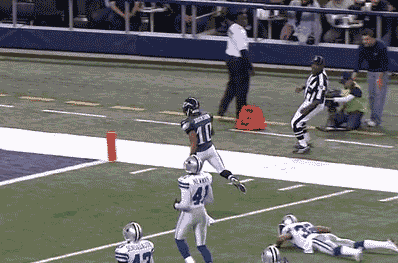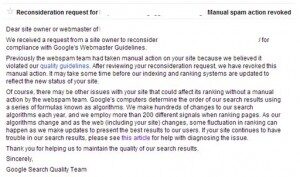I would dearly love to believe that so-called ‘negative SEO’ was not possible in this day and age of human editors, link checkers and auditors. Given my recent experience with a museum who were manually penalised, I can say ‘Negative SEO’ is alive, well and easily executed.
Proving Negative SEO Works Is Like
It all started when a museum launched a longer-than-average exhibition. They gave this exhibition its own domain and featured blogs from the curators. This was a significant enterprise for them and they worked quite hard on promoting it. My company gave them some support so we had a relationship with them and started helping ensure they could be found but we were not engaged to do SEO at this point or any sort of search support work. Everything was going along well until one day they were hacked.
The hack wasn’t too sophisticated so it was immediately visible that it had happened and they were able to flag it with their IT department. As these things go it was dealt with moderately quickly but the hack was up for awhile. Once resolved we went back to business as usual for them. Lurking in the background, unbeknownst to them or us, was a ticking time bomb.
Eventually we were contacted by them in a panic as they didn’t know what to do. They had dropped out of the rankings completely for their key terms (a phrase they invented). Upon examination we found they had dropped for their own brand term, their key terms and once we got Webmaster Tools access we found they had dropped for almost every key term and there was a message. They had received the dreaded “un-natural links” warning email. Disaster, but why?
Looking back over what they had done we could find nothing they have actively done which would explain the problem. They were a museum engaging in only the normal PR work – so what had caused the problem? Well, a few brilliant minds came together and one spotted it – the spammy links causing the manual penalty. Apparently once the hack happened, it caused a bunch of pharma links to be pointed at the museum site.
The weird thing was, those pharma links were irrelevant and should have been passing no value at all. So why did the museum, who were not selling anything like those links indicated, get a *manual* link penalty? The links were irrelevant and the anchor text was irrelevant so the links should have been passing no value.
What we have is an excellent example of how ‘Negative SEO’ works.
Manual checkers aren’t using common sense to check the sites it seems. How a museum could have been mistaken for a site benefiting from pharma links is unknown to me but it did clearly demonstrate ‘Negative SEO’ was still possible.
It only worked for a short time – eventually Google saw the lack of wisdom in the decision and when we contacted them they removed the manual penalty. This seems to me to be a really effective seasonal ping – throw the spammy links at a site just before a major shopping holiday, rake it in as your competition disappears and voila, you’ve won.
What should you do if you think you’ve been hit? Firstly check Webmaster Tools. We got a note, you’re likely to as well if you got a penalty. Next, check your back links. You can check Majestic SEO on your own site, Google Webmaster Tools, SEOmoz, and a number of other tools. Look at the anchor text of your back links – this is super easy in SEOmoz, Majestic SEO and a few others. Look to see if there is anything untoward or suspect. You should *never* have more keyword links than brand links and your keyword links should be on the theme of your site. If there are spikes on the Majestic SEO graphs around the time just before you got your penalty it could be due to volume of acquisition and in that case you might not have gotten an alert. We didn’t when we accidentally tripped a volume flag. Just dig using free or paid tools and see what is going on.
Once you find the errant links, if they are irrelevant as these were, use a WHOIS lookup and use the email contact to request that the links be removed. If it like it did for us, they will all bounce or be ignored. Once done, use that spreadsheeted list of the bad URLs and include them in your reconsideration request, stating that not only did you clearly not build them but they were contacted to ask for removed and emails bounced or went unanswered. It, of course, helps to be able to email a Google engineer but hardly anyone can. The above should work without extraordinary intervention.
Negative SEO is still possible, poisonous links do still exist and you can still harm an irrelevant site with bad links despite attempts to do so not always succeeding.
Tags: linkbuilding





